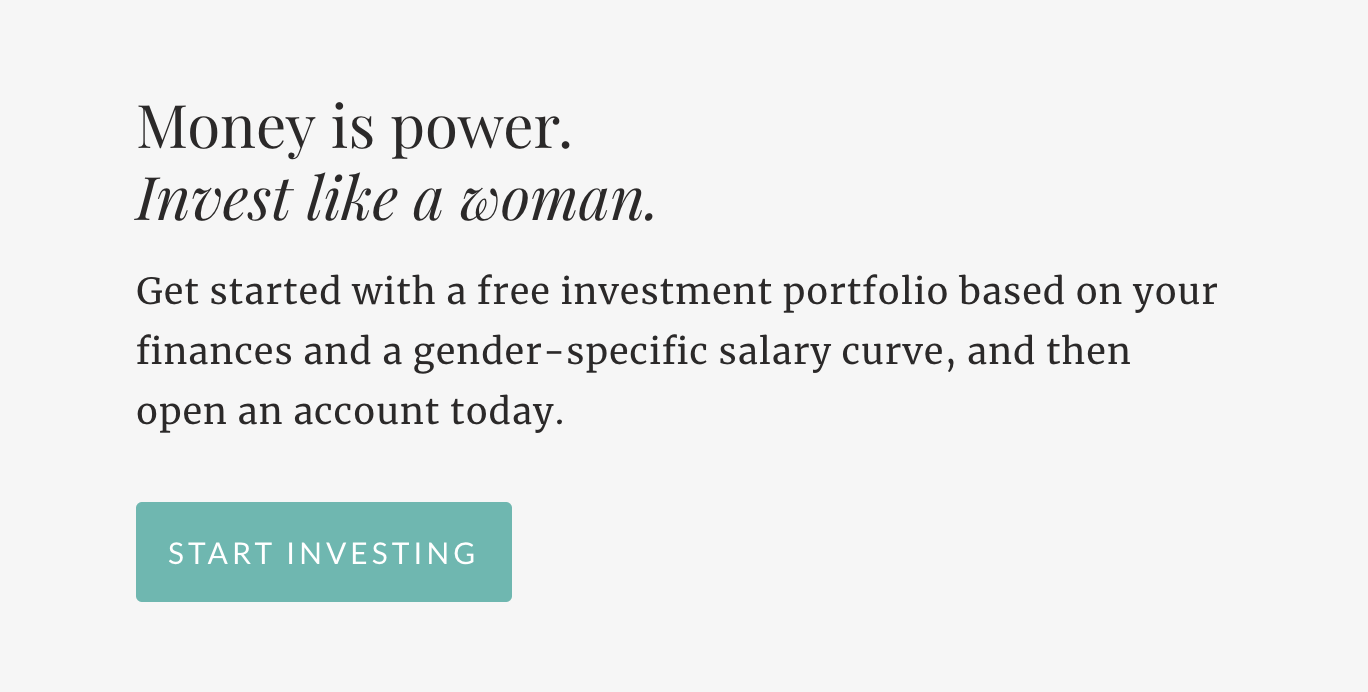Debt. You don’t know how it happened (or maybe you do), but suddenly it feels like you’re knee-deep in it. Whatever the amount, being in debt can be a horrible, stomach-wrenching feeling but remember: not all debt is created equal. And while it’s not something to be ashamed of (we all have some form of debt at some point in our lives), it is something that you can — and absolutely should — control.
So, don’t get discouraged, and don’t write it off as a hopeless burden you’re always going to have to deal with. Paying off your debt is absolutely within reach if you follow a few basic rules. The most important thing is to establish a balance and a healthy financial routine.
A common situation many of us are facing right now is deciding between paying off debt or investing. When you have debt, it’s easy to think that you should throw every spare penny you have at it.
But on the other hand, there’s the cost of waiting to invest. Maybe you’ve heard of that stat … the one that says thanks to the power of compounding, every single day you wait to invest could cost you $100.
So wait … so what is the best thing to do with your spare change: pay off debt or invest?

The answer: It Depends.
Both paying off debt and investing for the future are essential elements of a healthy financial life. Yet, these two tasks seem to battle head-to-head when it comes to prioritizing their importance. Is it best to get out of debt as soon as possible, or to simply pay the minimum amount on your loans and put any extra cash toward growing your savings? Here are some things to consider when determining the best decision for your funds.
Theoretically, the most intelligent course of action when deciding between paying off your debt and investing should compare two variables:
- The rate of after-tax interest you are paying on your debt
- The after-tax rate of return you expect to earn on your investment
When to invest and when to pay off debt instead
Here’s what our friends at Ellevest usually recommend:
First: Each month, aim to put at least 20% of your take-home pay toward Future You. That would include debt payments above the minimums, saving, and/or investing. (Although if you have a lot of debt or big financial goals, and you can swing it, it might be good to do more than 20%.)
For any debt with interest rates above 5% (ish … more on a possible gray area below), focus on paying it off. Use that “Future You” part of your budget, and if you have money just sitting in a savings account, throw that at your high-interest debt, too. (.)
Next: Once you’re free of those killer interest rates, switch focus and put that extra paper toward building an emergency fund of three to six months’ worth of take-home pay. (Don’t stop paying the minimum payments on any lower-interest rate debts, though. Missing minimums can do damage to your credit report.)
Then: When you only have debts with interest rates of less than 5% and have built up your emergency cushion, turn your entire focus to investing.
So, why not pay those debts off, too? Here’s why:
It’s all about interest rates
Credit card debt hurts: That piece of plastic can come with interest rates of 14% to 24.99%. On the other hand, some federal student loans’ interest rates can be as low as 3% to 4%. So that’s a pretty big range.
As for investment returns, that’s historically fallen somewhere in the middle. Part of the reason waiting to invest could cost you so much is that over the last 90 or so years, the stock market has had a long-term positive return — an annual average of 9.5%. (Some years it’s more, some years it’s less, and some years it’s negative, but that’s the historical trend over the long term.)
This is what the debt-vs-investing decision is all about
You want to focus on paying off debt if it’s likely to cost you more in interest than you might otherwise earn through investing. And you want to focus on investing if you think it’s likely to earn you more than you’d otherwise pay in interest.
This is what the debt-vs-investing decision is all about. You want to focus on paying off debt if it’s likely to cost you more in interest than you might otherwise earn through investing. And you want to focus on investing if you think it’s likely to earn you more than you’d otherwise pay in interest.
“A reasonable, conservative benchmark to draw the line between these two is around 5%,” advises Ellevest co-founder and CEO Sallie Krawcheck. “So that’s why we usually recommend that if the interest rate is more than 5%, pay it off. If it’s less, stick to the minimum payments and invest the extra instead.”
At the end of the day, any money you’re putting toward debt or investing is a step in the right direction. So let the math tell you which one to focus on first … and either way, know you’re doing Future You a favor.
Now, if you’ve got debt, you want a plan that helps you pay as little as possible in interest and fees. Here’s an explainer of how to do it from Ellevest:
1. Write Down All Your Expenses
Before you do anything, you need to figure out where you are spending your money. Get a money diary and start documenting all your expenses. You can even do it over Excel or go back to your credit card statements. Whatever your method, know where your money is going.
You may be thinking “I know what I’m spending my money on,” but in reality, writing it down (even digitally) will help you get a better sense of where you can cut back and start saving more money. These expenses include everything from Netflix to student loans, groceries, and clothing. Get it done.
2. Pay Off Your “Bad Debt”
First things first: not all debt is bad debt. Some debt can be “good,” but most of it it is “bad.” So, how can you tell what is “good debt” and what is “bad debt?” One form of potentially good debt can be student loan debt. Think about it: you getting a great education can lead to a higher-paying job, which can increase your earnings over time. Plus, student loan rates can be as low as 3.4% (possibly higher, depending on when the loan was taken out). You may also be able to deduct student loan interest payments of up to $2,500, depending on your income level, which reduces the annual cost of the loan. Call your provider to see if you qualify.
Another form of “good debt” can be a mortgage if you’re a homeowner. This is considered good because, well, you have a home, which if the value of the home goes up over time, can also be a form of investment. Interest rates on mortgages can be low (like 4%) and the interest payments can be tax-deductible — which, again, can make this kind of debt less expensive. So, you see, some debt can be “good,” but much of it is “bad.” And too much debt…when you’re drowning in it…is always bad.
Ok, so that’s the “good debt.” Now, let’s get to “bad debt.” One type of debt that is never ever good? Credit card debt. You already know a monster credit card bill isn’t a good thing. Carrying it over time is even worse. This is because when your credit card debt has really high-interest rates, you pay even more money over the life of your debt.
“If you have credit card debt, pay it off now. Do not go. Do not collect $200,” says Krawcheck. Credit cards can have an interest rate anywhere from 12.0% to 22.6%, which is definitely not a favorable number. With a single swipe of our credit cards, we can have whatever we desire but resist the urge to spend until you pay off your previous credit debt. The good news is that while you may be drowning in “bad debt”, you certainly don’t have to carry it over into 2018. Pay off credit cards in full now…or as soon as you possibly can.
3. Make Sure You’re Paying Your Student Loans Wisely
Depending on your income, you may qualify to refinance your loans in order to get a lower interest rate. With student loan refinancing, you’re taking out a brand new student loan to pay off all of your separate existing loans. This method doesn’t combine your loans, but rather creates a brand new loan for you.
The new loan payment and interest rate will be based on your credit score, so having great credit could mean substantially lower payments (i.e. money back to you). It’s a pain—we know it—but, it’s so worth it. Check to refinance rates with LendKey today.
Yes, it takes some time to refinance your loans, but trust us, it’s worth it.
The benefits of refinancing include: Possibly having a lower interest rate and payment on your new loan and getting a single bill for all of your loans.
4. Pause the Emergency Fund to Pay Off Bad Debt
You already know a monster credit card bill isn’t a good thing. Carrying it over time is even worse. Cut it down quickly and aggressively before investing in an emergency fund. While it’s safe and reassuring to have an Emergency Fund, the present situation is an emergency in itself. You will be happy you subtracted some money from your Emergency Fund now to pay off credit card debt, or any debt.
It’s better to use some of this money now while your debt interest rate is slightly lower, rather than years down the line.
5. Go for the Highest Rate
First, calculate how much money you can set aside monthly toward paying off your debt. Next, make a list of the debt that needs most attention to that which can wait for a little.
Focusing on the debt that has the highest interest rate is critical, so as to put a halt on it ASAP. Once you knock that one of the lists, move onto the next. There’s nothing more rewarding than penciling off debt after debt.
6. Talk With Your Lender
Give your credit lender a call and see if there is anything they can work out to your advantage. Discuss the possibilities of reducing your interest rate or waiving late fees to give you a little jump start. They may or may not be up for the favor, but asking every three to six months does not do any harm.
87 Make a Balance Transfer
Believe it or not, there are credit card companies that charge 0% if you transfer your money to their card. Go ahead and transfer your money, but the trick is not to make any purchases at the time. Instead, focus on lowering the balance outstanding, which will help to knock down your credit card balance. Doing this will reduce your interest rate, but remember you can’t depend on it to fix everything.
8. Cut Out Nonessentials
If you want to get rid of debt, you have to start trimming your spending — by a lot.
That lunch you bought over break? Nonessential. Cable. Yoga? Spotify. All nonessential — you don’t need these luxuries and getting rid of them will really help you to chip away at that ugly debt. It’s time to cut these nonessentials out of your life. You can always add them back on once you’re debt free and can afford to pay them off.
You worked all year for it, so don’t let it go to waste. Check out the best ways to spend your holiday bonus to put that extra ca-ching to good use.
Looking for more easy, actionable financial advice?
At Ellevest, they’re all about getting you to realize your biggest goals — whether that be planning for retirement, saving for that Aussie vacation, or starting a family. So with Ellevest, you’ll hear the phrase “goals-based investing.” Basically, what this means is that their investment objective is to help you reach your goals. That’s very different from trying to outperform some market index. Makes sense. Doesn’t it?









